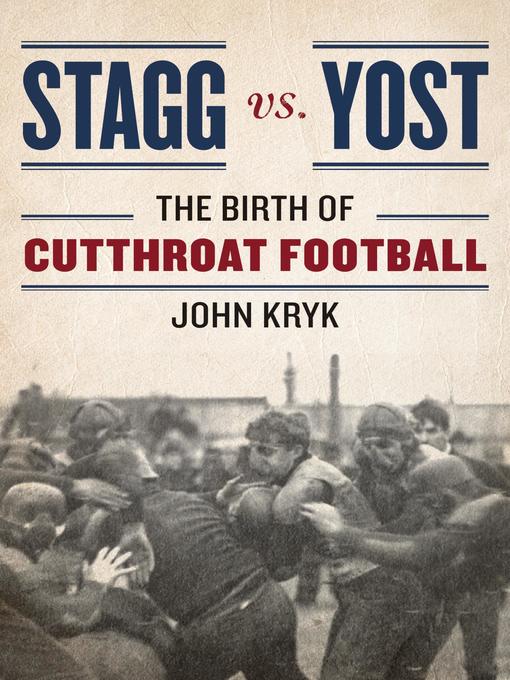
Stagg vs. Yost
The Birth of Cutthroat Football
کتاب های مرتبط
- اطلاعات
- نقد و بررسی
- دیدگاه کاربران
نقد و بررسی

August 31, 2015
At the start of this account of one of the major rivalries in early American collegiate sports, Kryk, the national NFL columnist for the Toronto Sun and Sun Media, promises but does not entirely deliver a no-holds-barred battle royal between two iconic football coaches. Football, which caught America's attention in the 1890s, first attracted fans with a violent gladiator edge, where linemen stood and mauled opponents at the scrimmage line, often injuring them with fractured skulls, dislocated shoulders, broken noses, and an occasional death. Rival coaches Amos Arnold Stagg at the University of Chicago and Fielding H. Yost at the University of Michigan had pristine reputations, but Kryk reveals that both indulged in serious violations in eligibility, tactics, and illegal payments to players from alumni. A surprisingly large number of innovative rules and regulations were put in place during the reign of the combative pair, who were obsessed with victories at all costs. The men are fascinating, but the author's narrative runs out of steam, and the reader becomes slowly bored with their self-centered antics. Kryk shows a real knack for describing the time period, the sport, and the bitter rivals, but their duel fizzles to nothing.

Starred review from August 1, 2015
Using archival materials, Kryk (Natural Enemies) chronicles the lives of two pioneering coaches: the University of Michigan's Fielding H. Yost (1871-1946) and the University of Chicago's Amos Alonzo Stagg (1862-1965). While Yost is mostly forgotten today, his fast-paced "point-a-minute" offense was an early precursor to modern no-huddle attacks. The venerated Stagg, who coached into his 90s, carefully burnished his pristine reputation as a paragon by moralizing about corruption in college football while demonizing the professional game as pure evil. Kryk discovered Stagg to be a shady recruiter and found that his dubious sportsmanship was expressed by publicly questioning the eligibility of players on rival teams prior to each game. There was a great deal of open resentment of Stagg's duplicity and insincere, ostentatious purity by his early contemporaries; for example, some referred to him as "Great-I-Am." Kryk doesn't dispute Stagg's greatness as a coach and innovator but suggests a fuller perspective of him, also advocating a reassessment of Yost as an imaginative strategist in football history. VERDICT Essential reading for those interested in the early history of college football.
Copyright 2015 Library Journal, LLC Used with permission.

























دیدگاه کاربران